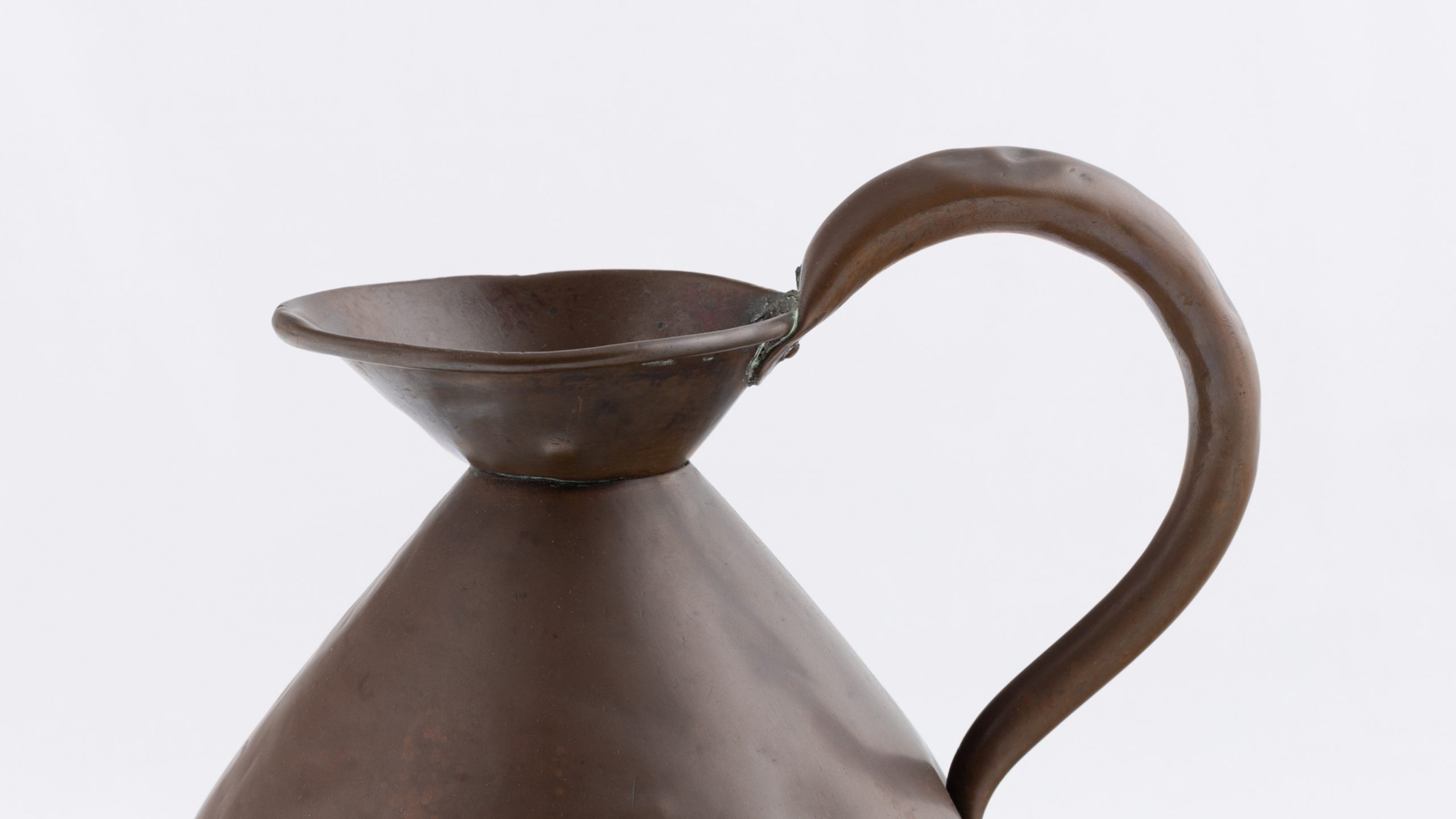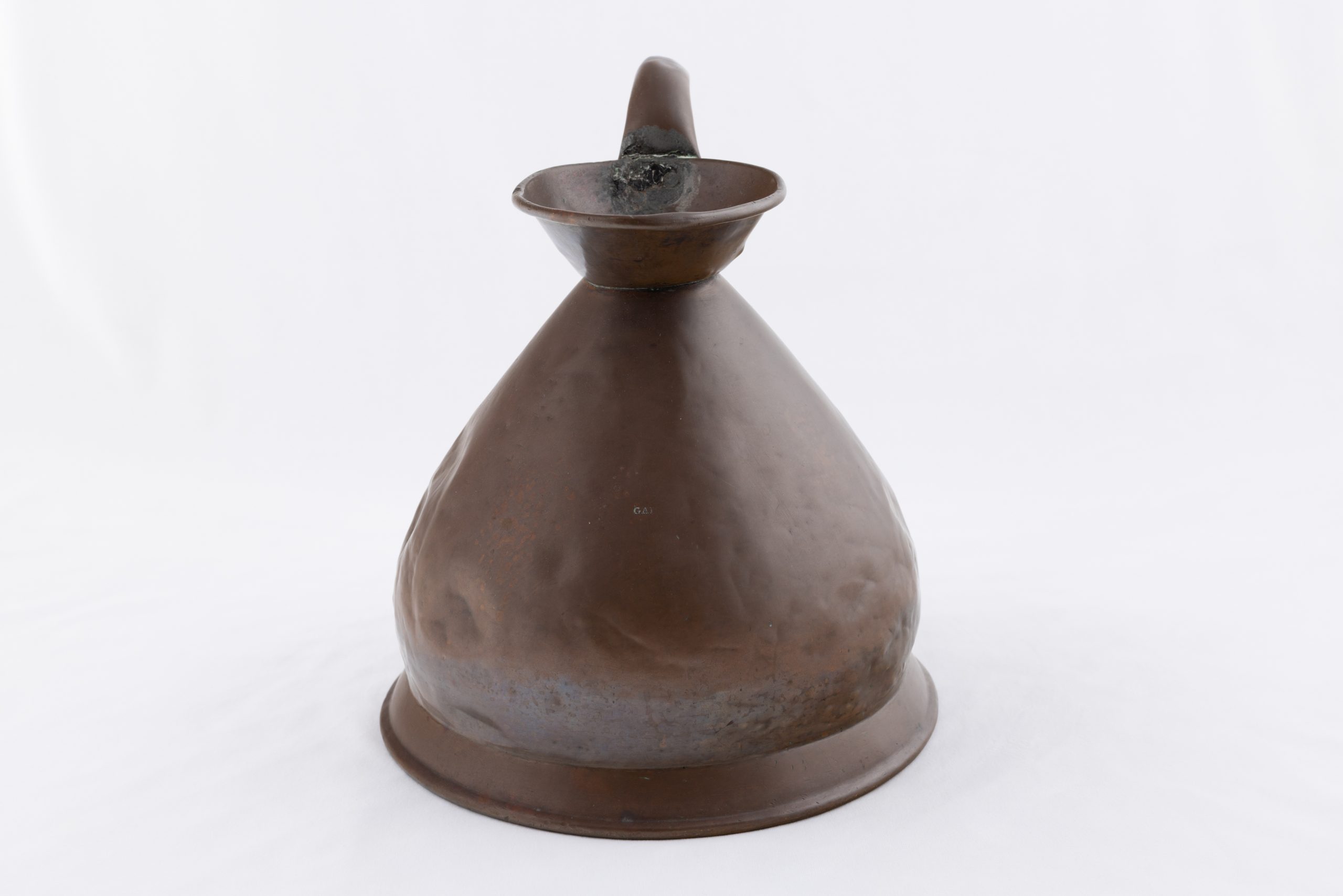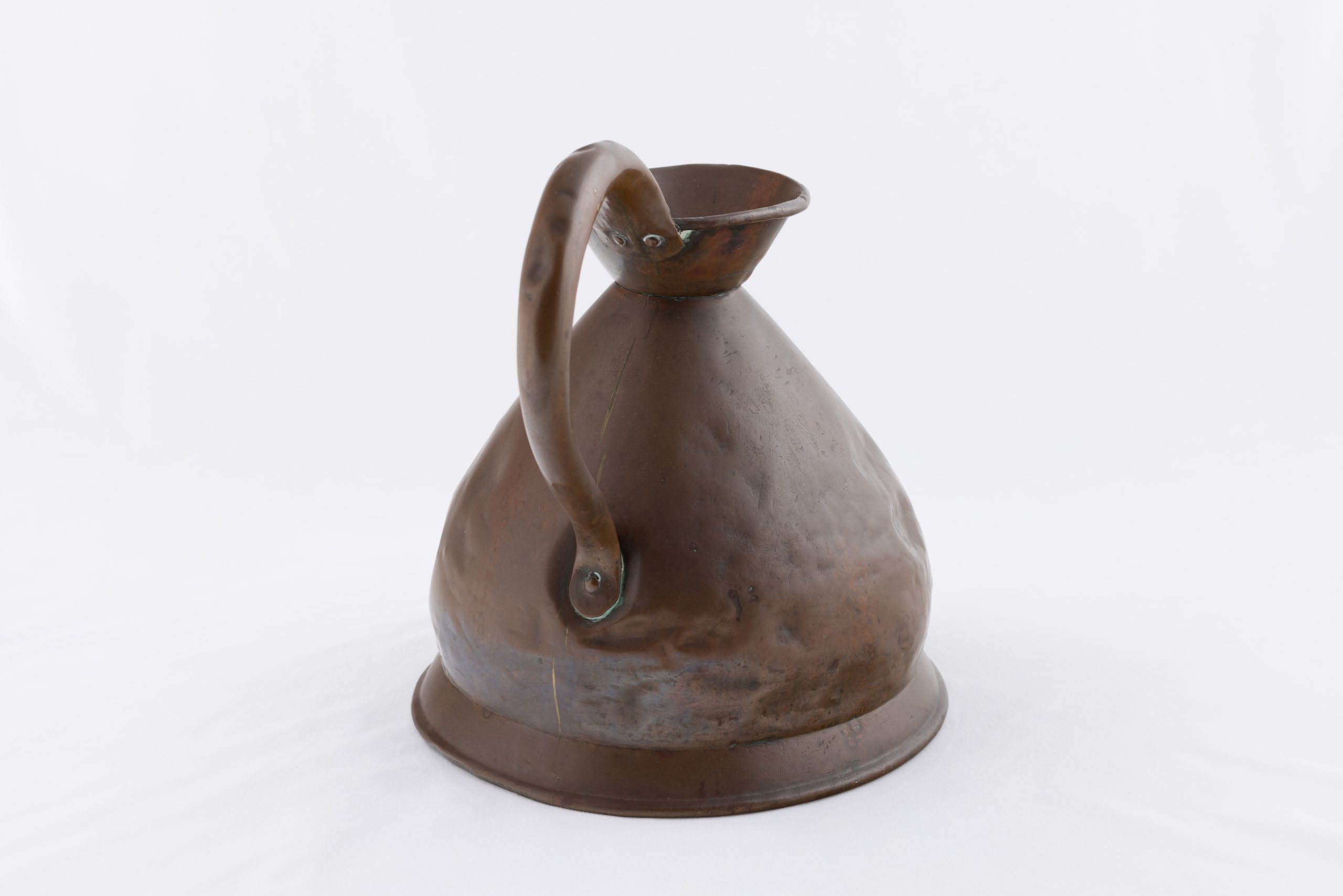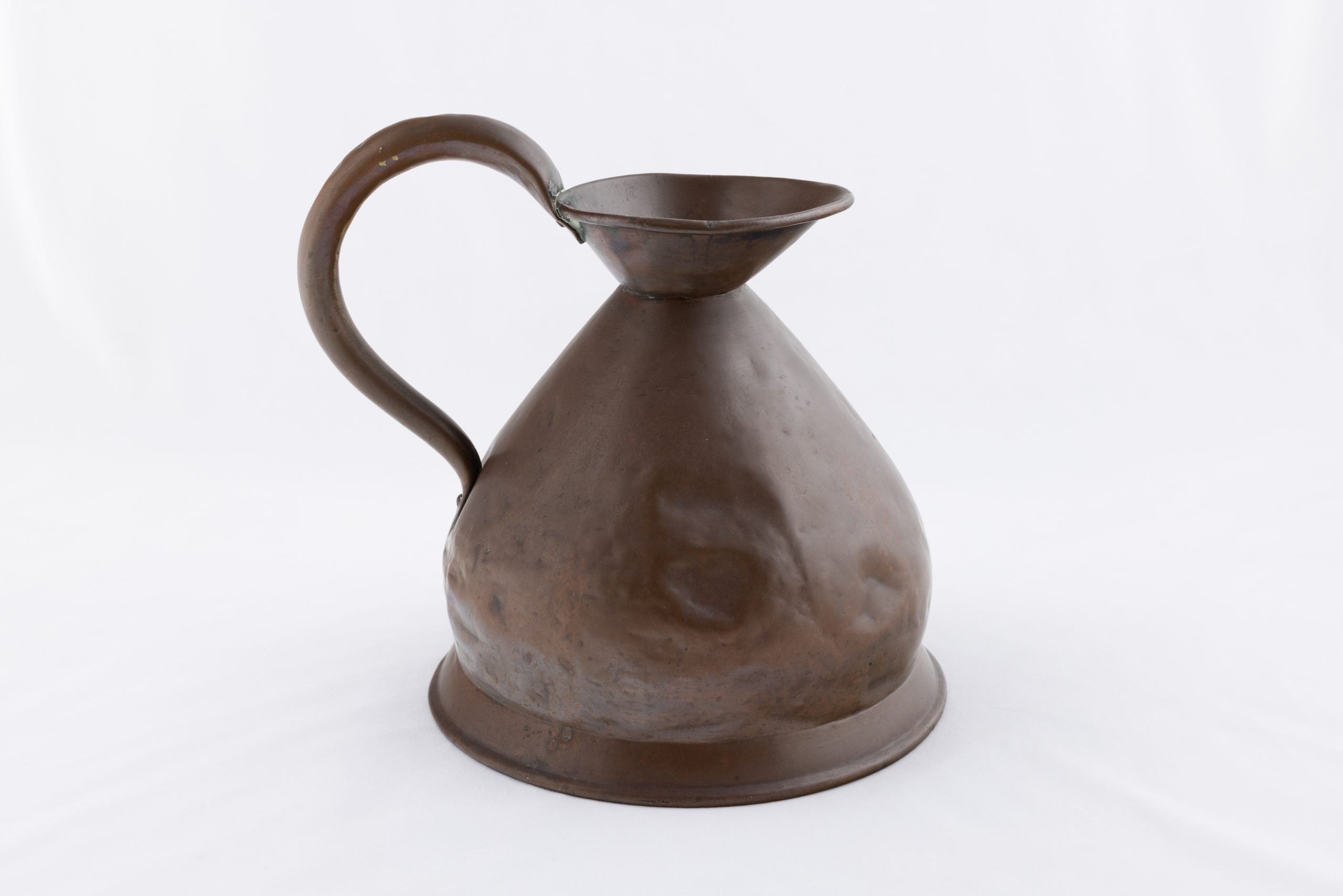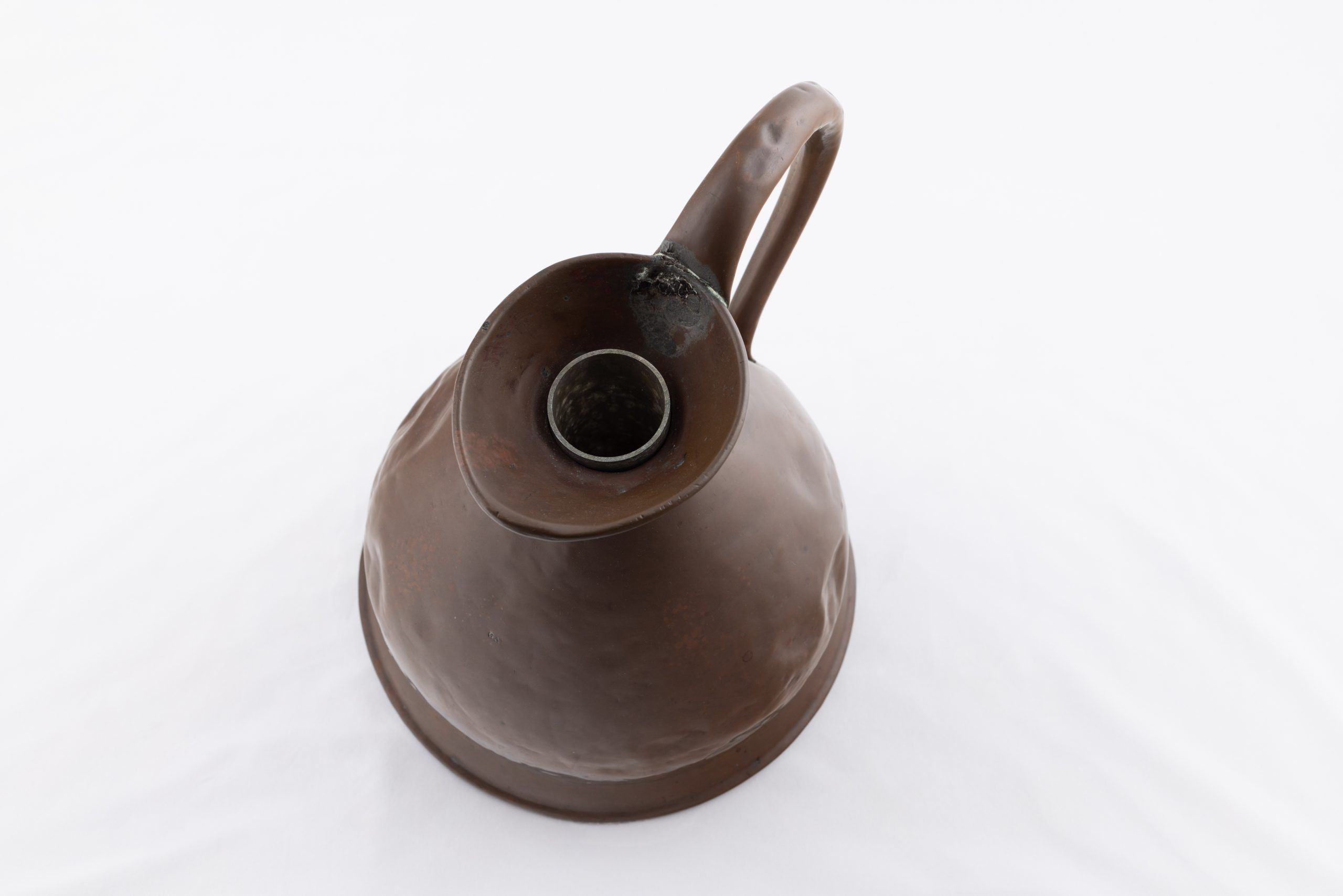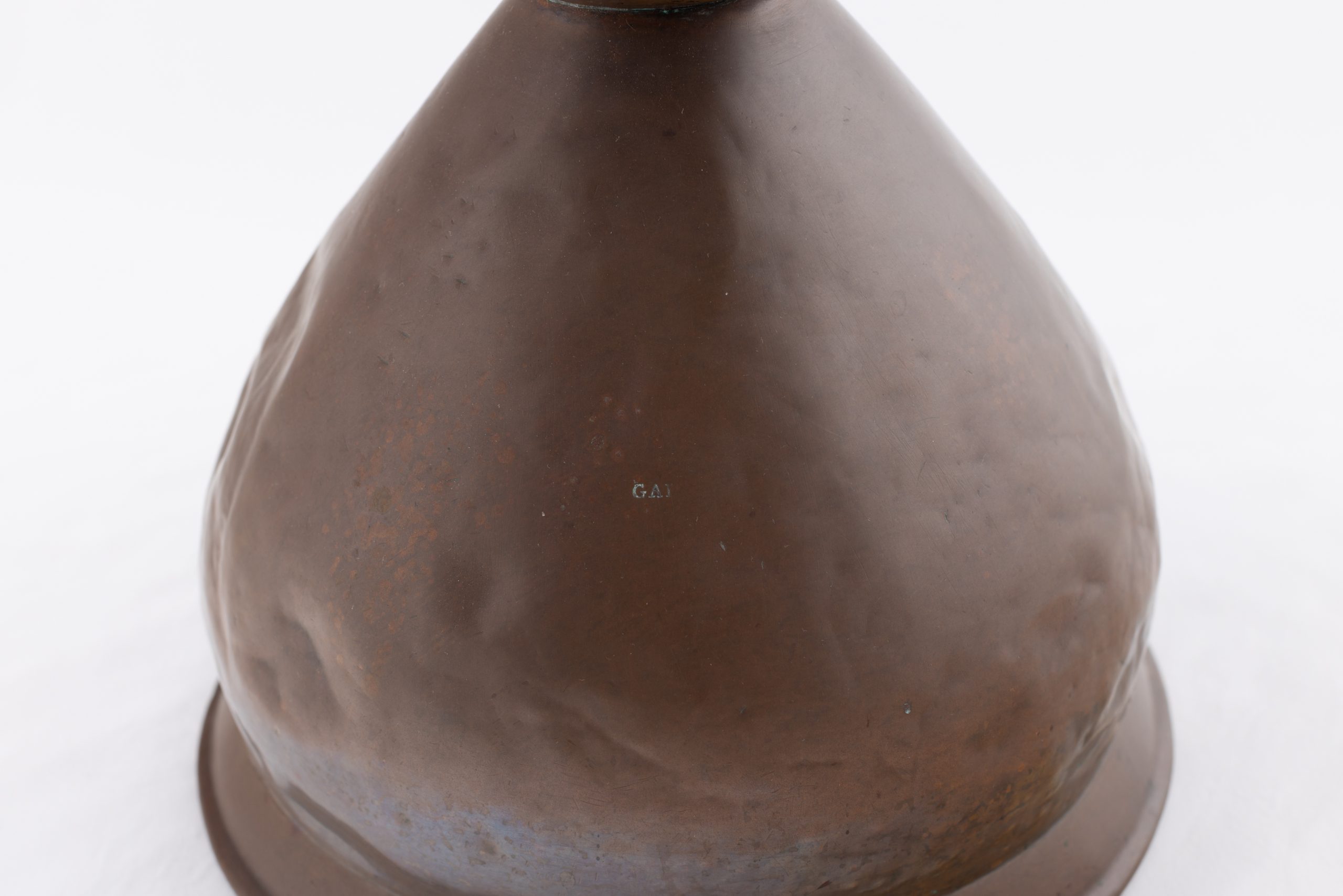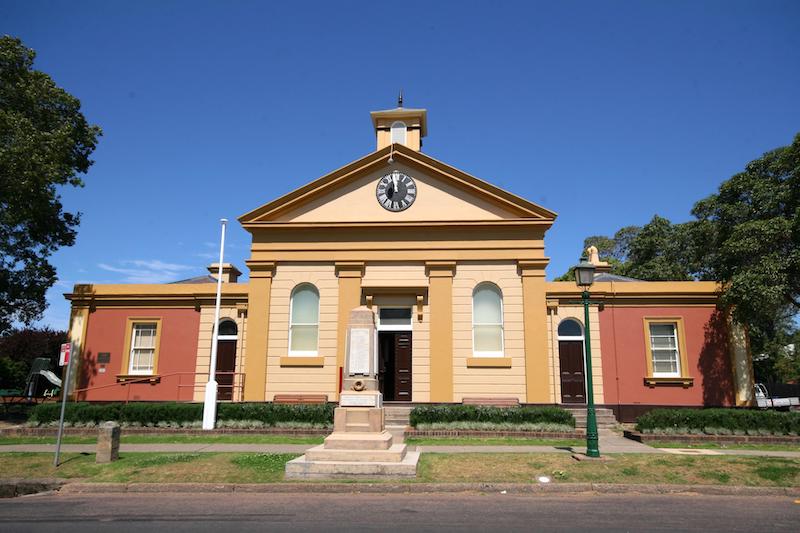Litres of Lacquer
A Shellac Jar from White’s Factory, Morpeth
Each time the last few drops of tacky, golden liquid dribbled out of this one-gallon (3.8 litre) copper jar, the French polisher at J.G. White’s furniture manufactory in Morpeth filled it again with methylated spirits. Then, carefully measuring out a pound (450 grams) or two of dry amber coloured shellac flakes, he emptied them into the jar, agitated it a little, then left it on the bench. The flakes dissolved overnight, creating the large quantity of lacquer he needed to begin work the next morning.
Produced by the female lac bug on trees in India and Thailand, shellac has had a multitude of uses, including as a glue for making ballet shoes and for preserving dinosaur bones. But in the Morpeth factory established in 1845 by Joseph George White (1822-1912) shellac was used for French polishing newly made furniture. This technique, involving the application of many thin coats of shellac to produce a high gloss finish, was perfected in France in the eighteenth century. White employed specialist French Polishers for this work, including one named WiIliam Leek in 1868, who broke his employment contract and left without giving White any notice.
But White’s did not only produce glossy lacquered furniture. Since his was the principal woodworking business in town, a natural side-business was coffin making and by 1860 White had also begun providing services as the town’s undertaker. The coffins he and his workers built were presumably also French polished to a high sheen with shellac from this jar.


